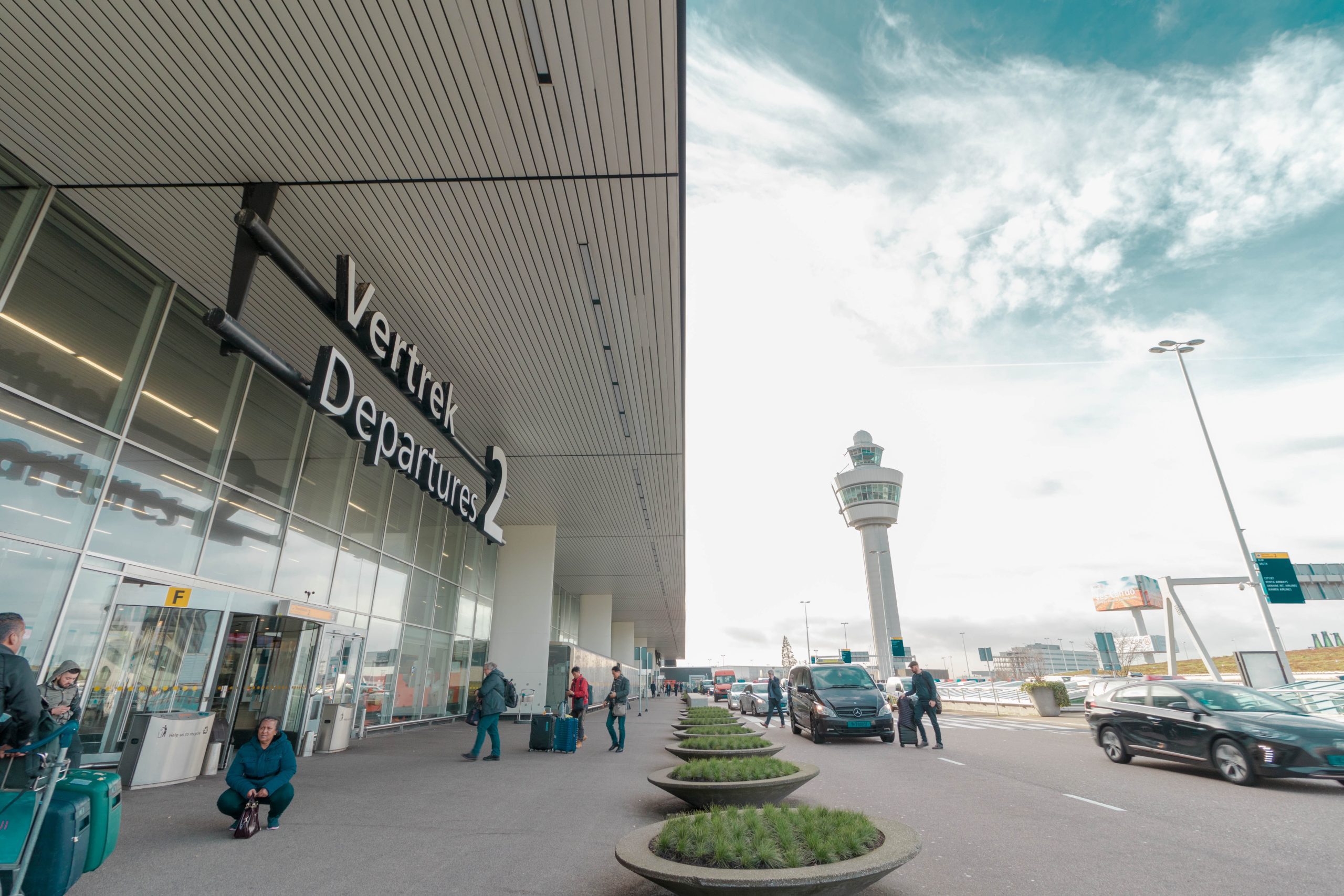Three TU Delft faculties are joining a research consortium led by Schiphol on making aviation more sustainable. CEG is one of them. What is its plan?
From front door to departure lounge: CEG examines how passenger traffic to Schiphol can be made more sustainable. (Photo: Unsplash/Ben Koorengevel)
Last week it was made known that the Schiphol-led research consortium of which TU Delft is part will receive EUR 25 million from European research subsidies. The project will start in January 2022 and will run for four years. The origins of the name is reminiscent of a game of Scrabble: ‘DemonsTrating lower pollUting soLutions for sustainable airPorts acrosS Europe’. TULIPS thus, a consortium of 29 partners of which TU Delft is one. Enquiries reveal that three faculties are involved. The usual suspect, Aerospace Engineering, is not one of them. The faculties involved are Civil Engineering and Geosciences (CEG), Electrical Engineering, Mathematics and Computer Science (EEMCS) and Industrial Design Engineering (ID).
Testing ground Schiphol
TULIPS is funded from the European Green Deal and thus has ‘green’ goals: the rapid introduction of sustainable technologies to make aviation climate neutral in 2050, plus major contributions to emission and waste free airports in 2030. Schiphol will be the testing ground for 17 of the sub-projects. Research will also be done in the partner airports of Oslo (Norway), Turin (Italy) and Larnaca (Cyprus). Other consortium partners include KLM, TNO and fuel pioneers SkyNRG.
Serious partners, emphasises Simeon Calvert, Assistant Professor of Traffic Flow and Network Management. He is involved in the largest TU Delft sub-project on behalf of CEG that is looking at reducing emissions of intermodal connections, in other words, the passengers’ transport to and from the airport. Delta spoke to him.
Will CEG send unmanned electric people movers to and from Schiphol, as Hong Kong Airport is already doing?
Laughing, he replies. “I don’t think so. TULIPS is aiming for a fairly high ‘technology readiness level’. Solutions need to be ready for implementation in three to four years. The CEG project is looking at all sorts of aspects, from innovative routing to the ‘mobility guarantee’ of mobility as a service in which you do not need to own your own means of transport. It is a mix of technology and understanding behaviour. For TULIPS, Industrial Design Engineering is doing a project that should generate more insights into the factors that determine behaviour. We are building on this, using the datasets and information that are already available.”
‘We can hit the road running at Champions League level’
Traffic flow management is not new for Schiphol, presumably?
“Exactly. This is another aspect that makes it an interesting project. There already is a very good knowledge base. Schiphol is an exciting research area given that it is a central hub in the region with all sorts of transport options. Road managers such as Rijkswaterstaat (the executive arm of the Dutch Ministry of Infrastructure and the Environment, Eds.) and the Province are part of it so that we have an immediate huge source of data at our fingertips. We can hit the road running at Champions League level rather than first having to struggle through amateur level at FC Something or Other.”
What do you hope the project will bring about?
“From a research perspective, the development of a data ecosystem that can also be used for other applications. We already demonstrated at SAIL Amsterdam (in Dutch) and more recently at the ‘corona campus’ that there are new ways of managing traffic flows. And in terms of impact, I would love it if we could bring about a real, permanent change in how people move to and from Schiphol. In the end it’s about three things: less emissions, greater safety and good flows. For the people who live around the airport especially, I really hope that we can get the emissions down considerably.”
Is that not a drop in the ocean compared to the emissions from air traffic?
“A good point. Reducing aircraft emissions is also part of TULIPS, but it is a different sub-project. In the timespan of the project – four years – I believe it is realistic to hope for substantial gains in emissions in sub-projects like ours. These sub-projects are about developments that we can achieve in the short term for the surroundings of Schiphol.”
- Air or train travel
‘The train could be a good alternative to flying to Brussels, Paris, London, Dusseldorf or Berlin if travellers do not have to worry about tickets, baggage and changing their booking if something goes wrong with the trip. This would bring immediate benefits and is not dependent on the laying of new train tracks.’ This was how the daily newspaper De Telegraaf summarised the graduation research of Rosa Hendrikx (Industrial Design Engineering) into air and train travel in 2030. The project was managed by Suzanne Hiemstra (Director Seamless Personal Mobility Lab), who is also involved in TULIPS.
Marieke Enter / Nieuwsredacteur



Comments are closed.